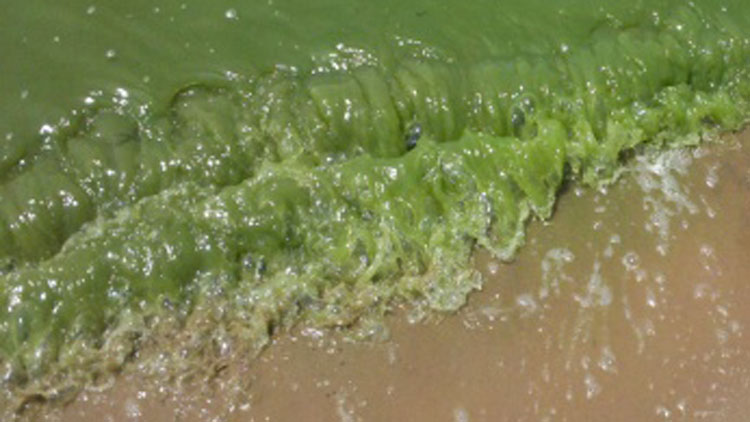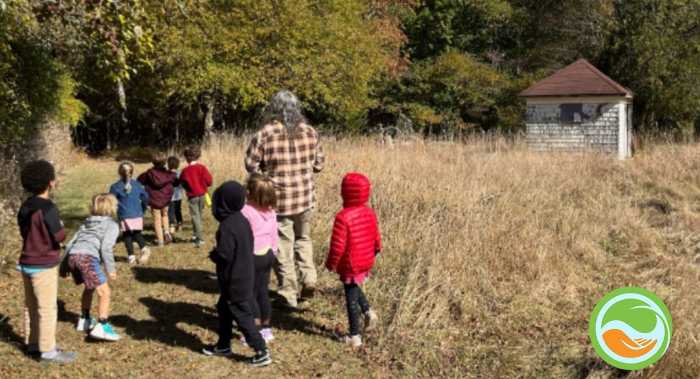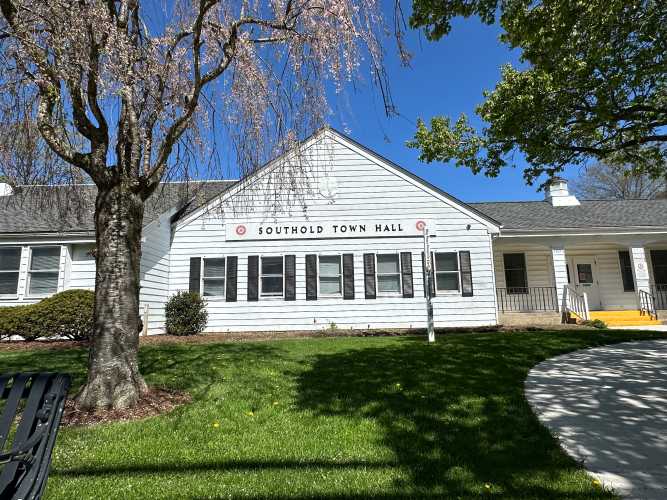Harmful algae blooms that can disrupt aquatic ecosystems and are potentially toxic to humans and pets have started appearing in new waterways on the East End of Long Island this year.
Researchers from the School of Marine and Atmospheric Sciences (SoMAS) at Stony Brook University have found red tide, a type of toxic algae bloom, in Moneybogue Bay in Westhampton for the first time in May. The New York State Department of Environmental Conservation (DEC) also confirmed last month that blue-green algae have infested Lake Agawam, Mill Pond and Wickapogue Pond in Southampton, as well as Big Reed Pond in Montauk and Marratooka Lake in Mattituck for the first time.
“The algae blooms are not only unsightly but also harmful,” said Robert DeLuca, the president of Group for the East End. “Their presence is more troubling than ever, they’re lasting longer than ever, and they’re more diverse than ever.”
Experts blame such algae blooms on storm water runoff and excess nutrients from septic systems flowing into the water. Last month, a team from IBM’s Smarter Cities Challenge consulted Suffolk County officials on upgrading the county’s septic systems to combat the problem.
Blue-green algae first appeared on Long Island in 2003, followed by red tide in 2006. Another type of algae bloom known as brown tide first emerged in 1985, devastating the scallop and oyster industry over the past three decades.
“These algae range from toxic to wildlife and toxic to humans to just plain nuisance and everything in-between,” said Carl LoBue, the senior marine scientist for the Nature Conservancy on Long Island.
Alexandrium, one of the species of red tide algae, can cause paralytic shellfish poisoning, which can be fatal to humans. Microcystis, a type of blue-green algae, is also toxic to humans.
“The red tide and blue green algae synthesize neuro-toxins and liver-toxins, respectively,” Christopher Gobler, the professor from SoMAS who led the research, said in an email. “These can sicken humans and animals. Humans are made sick if they drink freshwater with blue green algae or consume shellfish with red tide. Dogs can be made sick by drinking water with blue green algae.”
Algae blooms also cloud water and block sunlight to eelgrass, killing not only the eelgrass, but the fish and shellfish that use the eelgrass for spawning and nursery grounds.
Red tide also has been reported in Northport Harbor and Forges River in Mastic this year. Brown tide has affected Great South Bay, Moriches Bay, Shinnecock Bay, and Quantuck Bay over the past several years.
“It is slightly different for each species, but the common link among them is excessive loading of nitrogen from land to water body due to waste water (septic tanks) or fertilizers,” Gobler said. “In both cases, the nitrogen from these sources enter the groundwater which flows to surface waters.”
DEC’s Marine Biotoxin Monitoring Program searches for the presence of Alexandrium in Long Island’s shellfisheries, and the Suffolk County Department of Health Services tests water from the county’s swimming beaches. Health officials urged the public not to swim or wade in the effected waters.
The emergence of the algae blooms, which usually appear from spring to fall, was delayed this year across LI. One of the factors that led to the delay was this year’s cold winter, according to Gobler and LoBue.
Great South Bay has also had less severe brown tides since Sandy created a new inlet in Fire Island. The new inlet has helped flush the usually stagnant bay water with ocean water, reducing the amount of pollution in the bay.
“It’s an eye opener,” LoBue said. “People are saying, ‘Oh my gosh, we can recover from this.’ Some of them probably forgot that water’s not supposed to be brown.”
































